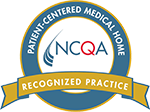Preventing the Spread of Pink Eye – Tips for Parents and Caregivers
Back to school means gearing up for the year ahead and making obligatory trips to the store to stock up on school supplies and a new wardrobe. But back to school also means taking preventive measures to keep your kiddo healthy. Pink eye, also known as conjunctivitis, is a prevalent eye infection that can spread quickly in a school setting. This blog will cover the types of pink eye and how they are best treated.
What is pink eye?
There are several different types of pink eye, but the two culprits we often find in school settings are bacterial and viral. They both present virtually the same. However, some require antibiotic eye drops. If pink eye is associated with a runny nose and congestion, then it is possibly a viral conjunctivitis and will resolve by itself without the need for antibiotic drops.
The most common symptoms are a pink or red hue to the eye or eyes, swelling of the conjunctiva, and yellow discharge – your child may wake up with their eyelids sealed shut from discharge released while sleeping. Other symptoms include a gritty or foreign body sensation in the affected eye and lots of itchiness.
Keep your child home if they have conjunctivitis.
Many of the viruses and bacteria that cause conjunctivitis are highly contagious. In a school setting, where kids are touching their face (and eyes) and then touching desks, lockers, toys, and pencils can cause the infection to spread rapidly. But pink eye can also be spread through droplets (remember, the eyes, ears, nose, and mouth are all connected) released when sneezing or coughing and through close contact with a person who has it. Its high contagion rate also means everyone at home is at risk of getting pink eye too. Keep anyone with conjunctivitis home until they do not have a fever (if one was present) or any other symptoms. In the case of bacterial conjunctivitis, a person is no longer contagious after 24 hours of the use of antibiotic drops and can return to school or daycare after this period.
Tips for preventing the spread of conjunctivitis at home
Good hygiene is the best way to prevent pink eye from spreading at home. Thorough hand washing for at least 20 seconds. Have the person infected avoid touching or rubbing their eyes. This can be difficult as pink eye is often very itchy. Do not share towels, pillows, or bedding while symptoms are present. Wash all bedding and towels with hot water and detergent. If your child wears contact lenses, stop until their doctor says it is safe to resume wearing them. Avoid swimming in pools as well.
How is conjunctivitis treated?
Depending on the type and severity of pink eye, it may be treated differently. The CDC recommends relieving inflammation and dryness with cold compresses (don’t reuse them and wash your hands to prevent contamination). Artificial tears are eye drops that moisturize the eye and can relieve some symptoms of pink eye. As mentioned above, stop wearing contact lenses. You should schedule an appointment with their pediatric provider if your child has:
- pain in their affected eye
- intense redness in their affected eye
- symptoms that worsen or don’t improve after the use of antibiotic drops
- a weakened immune system
If your child shows signs of having pink eye, contact our nurse advice line to determine if they need an appointment. Quick action by you can help reduce the spread and keep the rest of your family and the kids at your child’s school happy and healthy.








